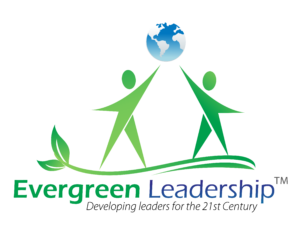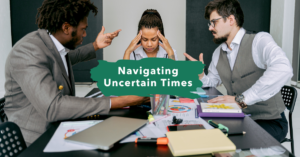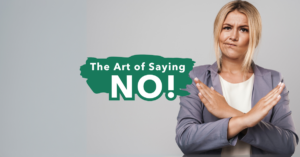OK – I admit it. I remember what it was like BEM. That is time before email. Hard to believe that we used to have to type our communication up, print it, copy it, and stuff envelopes. But we did.
It was clunky. It took effort. And because it did, we thought long and hard before we took on mass communication. And we actually talked, in person, to that co-worker a few desks over. And if they weren’t a few desks over, we either picked up the phone or walked out in the factory to where they were.
And then in 1973 email was invented. Our world has not been the same ever since. We have, at our fingertips, the ability to communicate quickly and easily with many, many people all across the globe. A few keystrokes, a subject line, email addresses and voila – email sent! That doesn’t necessary mean communication has happened – but we delude ourselves into thinking it has.
As with many things we create as humans, the problem we sought to resolve creates even more problems downstream. Email usage has exploded, and many would say has become unmanageable. A recent study notes that the “average” worker gets 121 emails per day. That same “average” worker spends 28% of their time at work reading email, which equates to 11 hours in a 40-hour work week. Many of the leaders I work with in large companies report averaging 500 emails a day. While this data is anecdotal, I don’t doubt them a bit!
The other unanticipated effect of email is that we’ve become electronically tethered to our jobs. On average, we check our emails 15 times a day. We check email at home and on our off hours. Email follows us on vacation, with many reporting that they fear what would happen if they didn’t unplug from email during these off times.
Email, that was designed as a communication tool, has been coopted for many other things:
- We spend time in email, believing that we are “working”.
- We send email when we fear a face to face conversation.
- We use email to coordinate group decision making, resulting in long and convoluted email chains and fuzzy decision making.
- We use email to convey complex information; too many times in ways that are confusing.
- We use email as a CYA strategy, copying hordes of people so that, if called on a decision, we can revert to “You knew that because I sent an email.”
It is a worthy goal to spend less time on email to spend more time on real work that matters. Yet today my goal is not to help you process even more email all the faster, so I’m not going to share “productivity hints” or “email hacks”.
Instead I’d like to challenge you with two more fundamental and more strategic questions:
- What tasks are you currently using email for that it is ill-designed for? What amount of email might you divert into other, more effective tools?
- Given that email is with us, like it or not, how can you make the emails you send more effective? How can you be a role model for effective emails – and encourage others to follow your lead?
Let’s start with number one: using email for what it is intended and pushing the other tasks you attempt to accomplish into better venues. You can use a hammer to pound screws in, but a screwdriver will get you better results, quicker and with less effort. It is the same with email.
One of the best moves I made was to insist that the projects I was working on collaboratively moved to Slack, a team collaboration app. In Slack, we can message each other (eliminating emails). We can upload documents (eliminating emails). We can take meeting notes (eliminating emails). We can all weigh in on decisions in one clean message stream (eliminating those dreaded email chains). We have one place where all that activity is recorded and accessible to any team member at any time. (eliminating emails)
Challenge One below is to have you stop generating emails for those things that email was not intended to do – and moving that activity to a tool that is better suited for the task at hand. This step alone will dramatically decrease the number of emails you send and receive, the time you spend responding to email and the time wasted sorting through your email rubble finding documents.
Challenge Two is based on the hard truth that email is not going away anywhere soon. You will, despite your efforts with Challenge One, still send and receive emails. As such, the question becomes how you can ensure the emails you send to others are the best they can be: clear, actionable, concise.
Think about it. If you send a poorly constructed email that is unclear and creates confusion to 20 people, you have not only wasted time, but have set the stage for second guessing, wasted action and lots of emails back to you for clarification. On the other hand, if you spend a bit more time in crafting a clear, concise, actionable message and send that to those same 20 people – the action that results is aligned, little time is wasted and you are much more likely to get the outcome you intended. Ten more minutes on your end cleaning up your email can result in averting hours of confusion to others.
Challenge Two outlines tips to make your emails more actionable, understandable and easier to consume. This challenge requires a bit of discipline. It requires continual vigilance. It takes more time in the early stages and less time as you build these habits and skills. I submit it is worth the time and effort – for you and for all those that receive your emails. They may never thank you, but they’ll notice!
Challenge One: Move Email Activity to More Appropriate Tools (45 minutes to evaluate)
Email is overused for tasks it is neither intended for or ones that are better served using other tools and approaches. One the best ways to tame email is to move these activities to other places:
- For having others book time on your calendar, I use Calendly. For other options, see this list.
- For finding mutually available time for groups, use tools like Doodle
- To transmit or share documents, use shared file locations like Google Drive, Box, DropBox or Sharepoint.
- To collaborate as team, keeping chats, files, meetings and decisions in one place where all can respond, record and retrieve, use tools like Slack or Teams.
- To get input or responses, use tools like Google Forms or survey tools.
- To help your team access you for quick decisions, set up “office hours” – a few set hours per week that they can drop by to talk to you.
- To have meaningful conversations about important topics, meet person to person (that can be face to face, over the phone or in a video chat).
Chime in: What tasks have you moved from email to another, more appropriate tool?
Challenge Two: Send well-crafted emails yourself (on-going)
In this challenge, you are going to lead by doing. You are going to be a role model for well-crafted emails by taking these actions:
- Create a clear and compelling subject line.
- Use the To line for those who need to take action
- Limit the CC line. Make if for those who you want to inform and remember that fewer is better.
- Have a clear call to action. What do you want readers to do? Either lead with the call to action or put it very early in your message.
- Send only one message or action per email.
- Be clear and concise. Strike unnecessary language.
- Organize the information in your emails for easy reading. Use spacing, bullets, and bold text for section titles.
- Proofread – for grammar and spelling. Proofread again for clarity.
- Check the tone. How will your reader respond?
- Use links(preferred) or attachments for detailed or complex information.
- Move the conversation out of email and into face to face when the email strings get unwieldy.
Resources I Recommend
- Once you are using email only for what it is intended – then you can begin to get more efficient at processing the mail that is left. Here is a great HBR article on How to Spend Less Time on Email Every Day.
- Lisa Bodell has a lots of email simplification tips in Why Simple Wins: Escape the Complexity Trap and Get to Work that Matters




